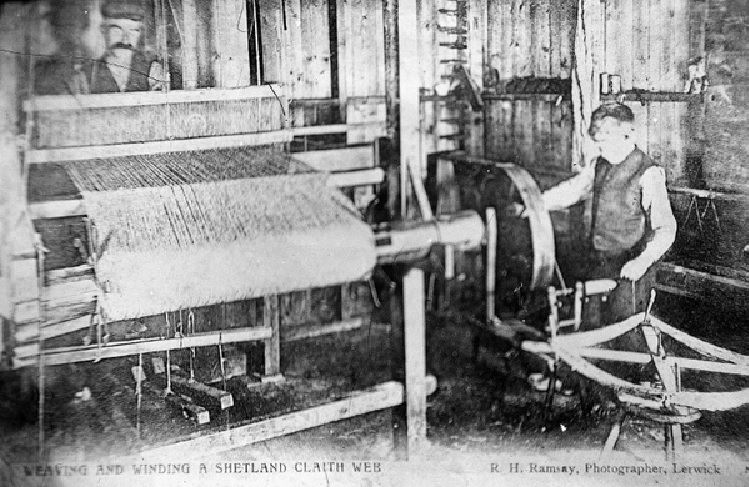
When I did my degree at the School of Scottish Studies, I loved nothing more than sitting in the sound archive and listening to field recordings and oral histories, which have been collected there since the school was founded in 1951. Over the last 60 years there are thousands of recordings of songs, music, tales, customs, place-names and local history. Some of my favourite recordings in the archive are those which focus on something which was – at the time- still in living memory, though now an extinct or dormant tradition, or that which has changed or evolved significantly since the original recording.
The earliest archaeological finds of woven textiles in Shetland dates back to 800-400 BC and rough, fulled fabric called wadmal was woven since the middle ages and used as a means of currency and paying taxes. Into the 20th century and Shetland unique ‘Homespun’ fabric hit the fashion heights as softer alternative to Harris Tweed. I was lucky enough to see for myself cloth being woven at Jamieson’s Mill during Shetland Wool Week; the rapier looms working with the soft Shetland yarn to produce quite a unique fabric.
The Tobar an Dualchais website, or Kist o Riches, contains just a portion of body of recordings held by the school’s archives. While I may be enabling you to fall into a wonderful hole of voices, sounds, songs and magnificent recordings (mostly with a ticking mantle clock in the background) I would like to point you in the direction of this 1974 recording where the late Alan Bruford was talking to Ertie and Bella Couper of Collafirth, Shetland. Traditional hand weaving took place in this area until the late 1920s until power looms were introduced.
This is an insight into a way of life that has gone now. While Shetland cloth is being still produced to create beautiful garments and blankets, the process is much different from the sheep to cloth journey that people like the Couper’s had to take. They had to card and spin their own wool before taking the yarn to the weaver. There were three weavers in their area and the average wage the weaver earned was sixpence per yarn – around £2 in today’s money – not much when the merchant would sell the finished item for over 3 times that amount!
You can listen to their discussion here (and enjoy the ticking of that mantle clock too.)
If you are interested in Shetland cloth please see Jamiesons of Shetland for their cloth products. I also heartily recommend reading Shetland Textiles: 800 BC to the Present, edited by Sarah Laurenson.